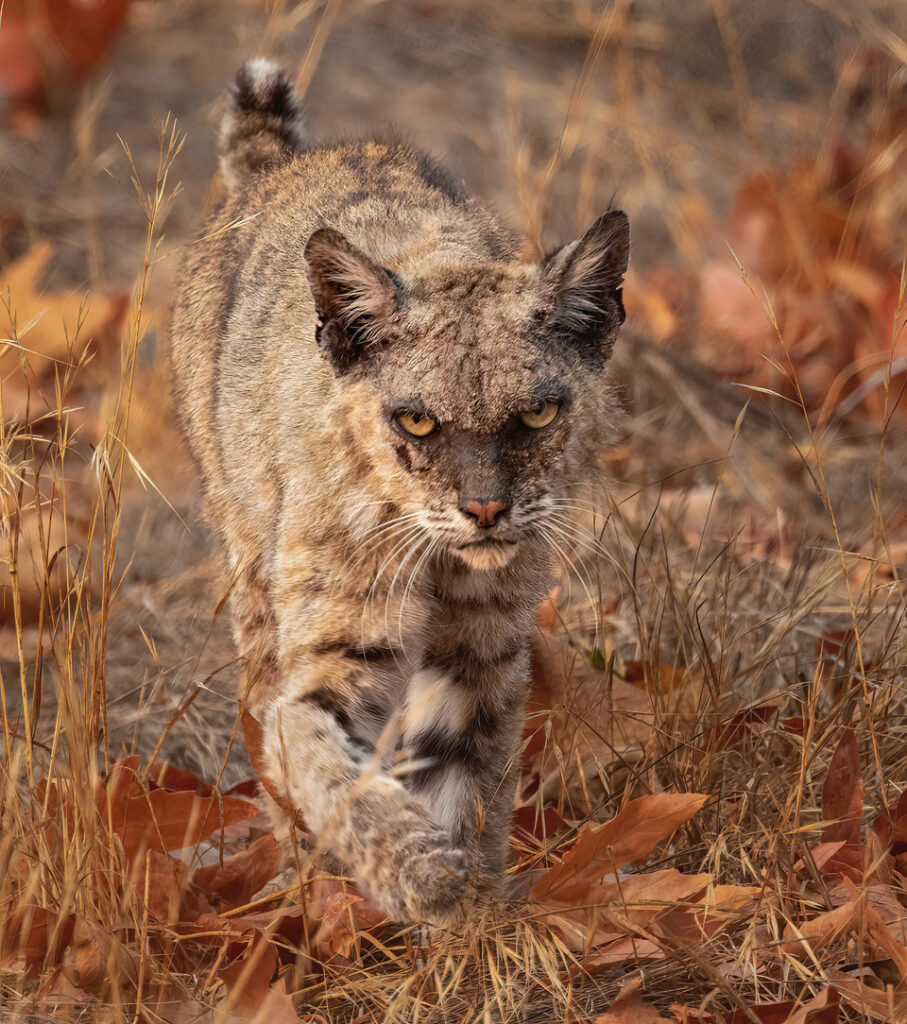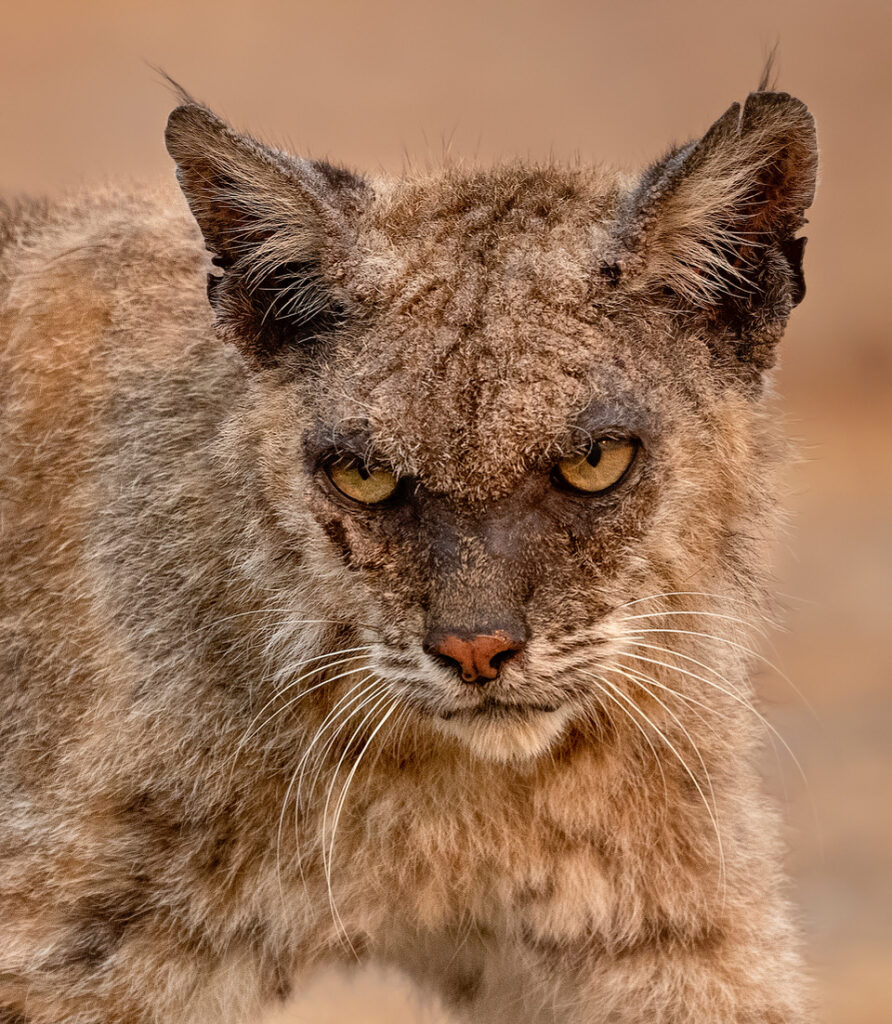Article and photos by Vishal Subramanyan

In early August, I opened up my Instagram and saw a post from a local hiker about a bobcat roaming the vineyards in Livermore. Bobcats are common in the Bay Area, and frequently seen by hikers, but upon looking at the picture, I could immediately tell something was wrong with this bobcat. He was missing fur on parts of his face and neck, and had an overall sickly appearance. It was clear that this bobcat had mange—and I knew that his disease was almost certainly due to anticoagulant rodenticides.
Mange is caused by a parasitic mite that burrows under the skin of animals like bobcats. This often leads to skin issues, with the bobcats losing fur, especially around the face. This can eventually lead to hypothermia, infection, and death.
One of the most common types of rodenticides used are anticoagulants, which are meant to stop blood clotting so the rodent will bleed to death internally. When bobcats consume anticoagulants by eating poisoned rodents, the levels of poison they ingest can weaken their immune systems, making them much more susceptible to the mites that cause mange. Studies have shown that in areas with severe mange outbreaks, most or even all of the bobcats had anticoagulant rodenticides in their system. The vineyards in Livermore frequently use rodenticides and this bobcat almost exclusively hunted in those vineyards.
Upon seeing this posting, my friends and I went out in search of the sick bobcat, in the hope we could do something to help him. It took us a bit of searching, but on a smoky Wednesday morning, we peered into a field and saw some movement in the grass—it was him.
As the bobcat moved across the field, we could see how awful his condition was. His face was a charcoal black color, because so much of his fur was missing. He was quite thin, and moved in a sickly and lethargic manner. And he was regularly shaking his head and biting his ears in a fruitless effort to get rid of the mites that had infested him. It was truly sad to see a bobcat in such condition.

We contacted Rebecca Dmytryk of Wildlife Emergency Services in the hope she could rescue this bobcat. Rebecca is an experienced wildlife rescuer who has helped catch many bobcats with mange before. Sadly, he died before she was able to capture him, and the carcass decomposed too quickly for us to ship it to CA Fish and Wildlife for testing.
Mange outbreaks have been responsible for the deaths of many bobcats in California, including in the Santa Monica Mountains in Southern California and Rancho San Antonio Preserve in the Midpeninsula Open Space District. Despite the ubiquity of mange in bobcats, this bobcat is the first mangy bobcat I have observed in the East Bay Area, and I hope it is the last.
If you want to help stop mange from anticoagulants from killing our wildlife, please stop using rodenticides and help spread the word about this issue. RATS will be reaching out to the vineyards mentioned in this article to encourage them to switch to safer products for rodent control.
You can also help by supporting RATS’ legal effort to get diphacinone reevaluated. Here’s a quick video I shot to show how the condition of the bobcat:
